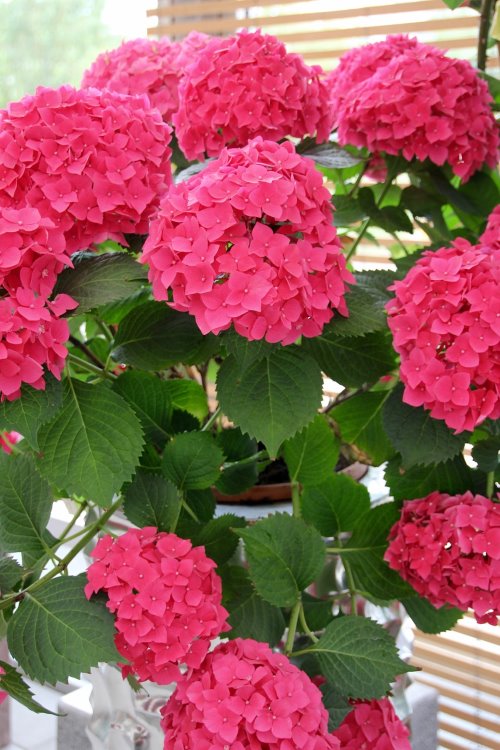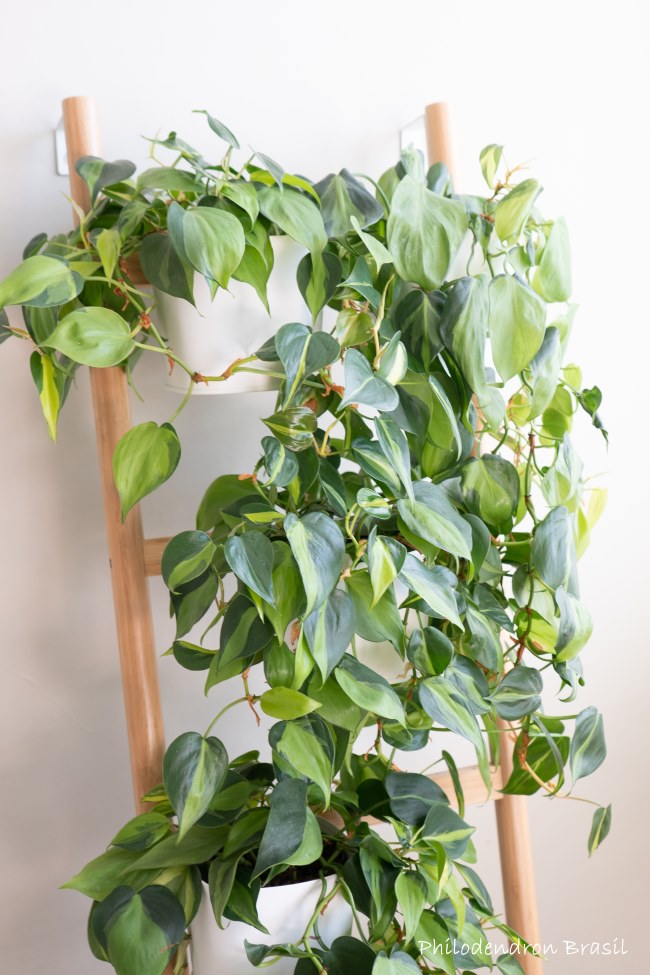Rubber Plant Care
Ficus elastica, commonly known as Rubber Plant, is a bold evergreen that gets its name from the sticky sap that dries into a low-quality rubber.
It is popular as a house plant, however, because of its large, leathery, glossy leaves that can grow to 8 in (20 cm) long or more -- and because it is so easy to grow.
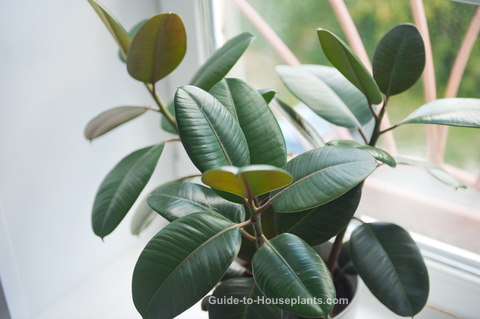
Get to Know Rubber Plant
Rubber plant has origins in India and Malaysia, where it can grow more than 40 ft (12 m) tall.
How big does it get indoors? Mature houseplants can grow to 10 ft (3 m) tall in a container, if not cut back. Want a fuller, bushier plant? Prune it anytime and it will branch out from where it was cut.
Pruning tip: The central stem will typically grow straight, without branching. Regular pruning of the growing tip will encourage side branches to form as it grows. You can control its height by simply cutting off the top when it becomes too tall and lanky. Use sharp pruning shears to avoid tearing the stems.
Rubber Plant Varieties
There are many named varieties to choose from: 'Robusta' is the most common with large, solid green foliage. 'Decora' has big, glossy, dark-green leaves that grow up to 12 in (30 cm) long...'Melany' is more compact and branching.
Several varieties have reddish leaves, such as 'Burgundy', and some newer cultivars have variegated leaves. 'Doescheri' is splashed with green, gray-green and creamy yellow or white. 'Tricolor' has gray-green leaves that are variegated with cream and pink. 'Tineke' is variegated with light-and-dark green and edged with creamy white.
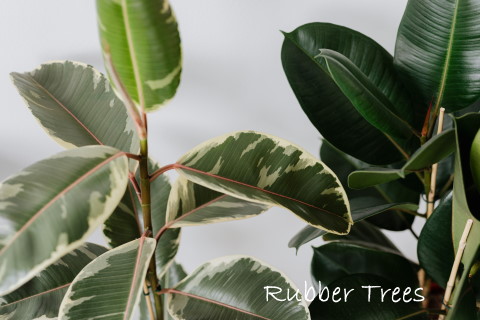 Ficus elastica 'Tineke' and 'Robusta' cultivars. Photo Karolina Grabowska
Ficus elastica 'Tineke' and 'Robusta' cultivars. Photo Karolina GrabowskaCaring for Rubber Plant Year-Round
Just like many other plants in the Moraceae family, this one doesn't like to be moved around. Sudden changes in temperature and light may cause rubber plant to drop its leaves, although it's not as fussy as its cousin, the weeping fig.
Repot in spring only when its roots fill the pot -- rubber plant likes to be slightly pot-bound. Use a container with drainage holes to prevent overwatering. Never repot a plant that's shedding its leaves, which will make the problem worse.
Water regularly to keep it healthy. Leaves that turn yellow and fall off are a sign that it's overwatered. However, it's perfectly natural for older, lower leaves turn yellow, then brown and eventually fall off.
Something bugging your houseplant? Check for signs of scale insects and mealybugs that may infest rubber plant. Care should be taken to treat any problems as soon as you notice them.
Watch for sooty mold. It's not a disease; this black dusty mold grows on leaves covered by the honeydew excreted by sap-sucking insects, such as scale. You can remove it by simply wiping off the affected leaves with mild soapy water.
Keep leaves dust-free and shiny by gently wiping them off with a damp cloth. Young leaves are easily damaged; bending or scraping foliage will scar them for life.
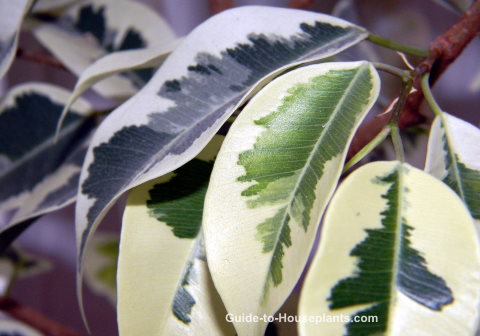
Rubber Plant Care
Light: Give rubber plant bright, indirect sunlight year-round. Some morning sun is fine, but keep out of hot, direct midday sun which can scorch its leaves. Rubber plant will drop its leaves if it doesn't get enough light. Don't have a sunny window available? An LED floor lamp will keep your indoor plant growing upright.
Water: Keep soil evenly moist. Use a pot with a drainage hole, water thoroughly, then empty drainage tray. Be careful not to overwater, which will cause root rot. Drooping yellow leaves are a symptom of overwatering.
Humidity: Relative humidity around 40% is ideal. Indoor humidity can plummet in winter, so it's a good idea to increase the humidity for your tropical houseplants.
Temperature: Normal room temperatures 65-80°F/18-27°C. Rubber plant will tolerate a minimum of 50°F/10°C in winter. Protect Ficus elastica from blasts of hot or cold air from heat/AC vents, doors and windows. It doesn't like sudden temperature swings, which may cause its leaves to fall off.
Soil: Peat moss-based potting mix.
Fertilizer: Feed once a month spring through summer with a balanced water-soluble fertilizer that includes micronutrients.
Propagation: Take stem cuttings in spring. To keep its sticky, white sap from forming a cap on the base of the cutting, place the tip in water for 30 minutes. Remove from the water and dip only the cut surface in rooting hormone. Then insert it into moist potting mix to root.

